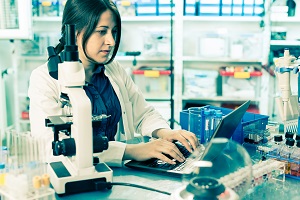Entire teams of scientists are testing genetic editing at various stages of a person's life. Some of these are developing therapies for adults, others are thinking about how to eliminate diseases from IVF embryos.
A Philadelphia team used CRISPR to heal a guinea pig still in the maternal uterus. In utero editing offers a wide range of benefits in the case of some diseases. According to Dr. William Peranteau, in some cases intervening at the time of delivery is intervening too late. This is what happens with SFTPC gene mutations, linked to severe lung diseases. Under normal conditions, these anomalies lead to the death of the child during childbirth.
That's why it's important to take action as soon as possible. Philadelphia scientists injected correct versions of the gene into the amniotic fluid of some pregnant guinea pigs. The viruses that carried the gene reached the fetus and corrected part of the cells, at least in 20% of cases. In this way the babies are born with far fewer non-functioning cells and have survived the birth.
Performing this operation in an embryo would alter all the cells, which could be excessive. It would also affect germ cells, making any abnormalities introduced by CRISPR inheritable. An unacceptable risk for many scientists, because it could cause the birth of new genetic diseases.
Source: statnews.com
Add a comment





